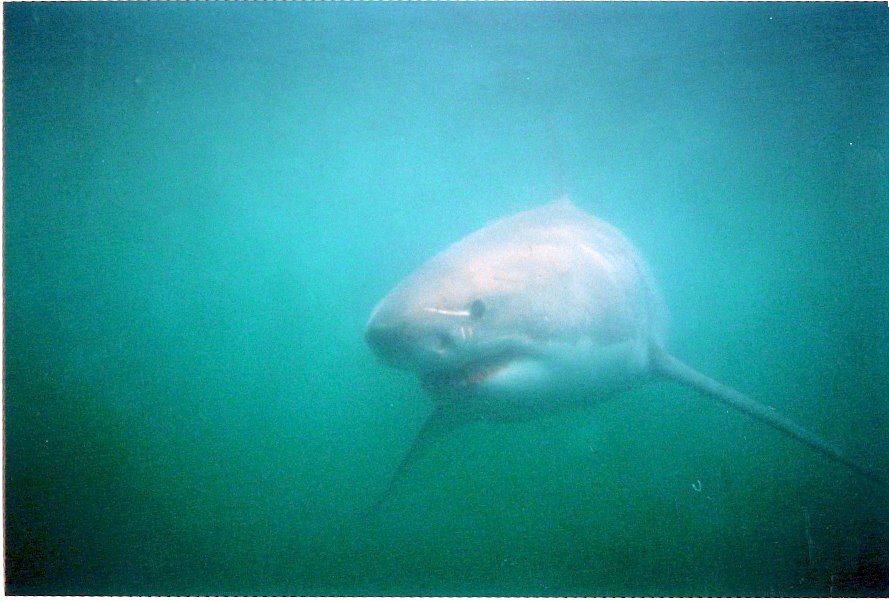Unstabbed
Well, I am now back from Gemsbok/Oryx (same thing) capture. It was quite exciting; the whole thing takes at least 15 guys, a helicopter, a big game truck, and a huge funnel called a boma. The boma is made out of heavy canvas, attached to poles and trees, with curtains running crosswize along its length making ever smaller triangles when closed.
Herds of oryx are chased into the boma by the helicopter pilot. This is no small feat, he must drive the animals before him and get them right into the boma without turning aside. The wind must also be right; if the animals smell human scent they turn aside. Sometimes the oryx just stop, and he has to drop his chopper dangerously low to scare them into running again.
Once the oryx run into the boma, men hiding in the curtains pull it shut behind them. (Yes, this leaves them in the same enclosed space as stampeding animals.) The oryx are chased forwards into the “tip” of the funnel, made or corrugated steel plates and known as the “manga”. Once the oryx are chased into the manga a heavy door is slammed shut behind them and the animals are “processed.”
(Is all this making sense? If not, I’ll try to scan a diagram and post it when I get back home.)
A springbok, you may remember, is small and timid. An oryx is big and aggressive and built like a donkey, right down to the sandy brown coat, the stubbornness and the vicious kicks. However, unlike a donkey, it’s black-and-white head is armed with two straight, meter-long horns that it wields like a master swordsmen. Game catchers have been run right through by an angry oryx. You don’t want to mess around with these things; they can easily kill you.
To keep the oryx from killing each other in the confines of the truck (they fight when cramped) it is necessary to put plastic piping on their horns. We heat the heavy plastic pipe over a fire, scramble up the outside of the manga (there is a bar to stand on) and lean over the teeming herd of terrified oryx. The horns need to be grabbed, and the pipes shoved on securely and pounded into place with small hammers. Luckily, an oryx is built to stab forwards, not upwards, but it’s still pretty exciting flailing around in a sea of flashing horn-points. Naturally, they don’t appreciate hot dripping plastic and hammer blows raining down on top of them, and they do their best to resist (mostly just by moving their horns out of the way.) Once all the oryx are “piped” they need to be loaded. They are just too big and strong to be wrestled on board to the truck like a springbok, and they tend to be stubborn; the oryx backs itself into a corner, lowers his head, and dares you to get him out.
From the top of the manga, we make noise, thwack the oryx with pipes and zap them with cattle prods until they finally go up the ramp into the truck. The trick is to prod them right in the anus; that’s the only thing that really gets them moving. To direct them, two brave men (the workers argue amongst themselves to NOT get this duty) push them forwards with a heavy metal “pressure plate”, a massive shield/barrier that keeps the oryx moving forwards while deflecting the horns (even piped they can deliver a nasty blow) and some seriously scary kicks. Luckily, since the oryx like to stand in one spot, they don’t actively run after you (unlike, I’m told, a sable antelope. I’d LOVE to go sable catching some day. Must be a thrill.)
My game catching time has come to an end, since my uncle has no more work until next week. I return to Cape Town on Sunday, to wrap things up before taking the “lovely” flight back to Canada.

No comments:
Post a Comment